Where is Mexico?
About Mexico
The Land
The People
Life and Death
Health, Energy and the Environment
Education and Work
Travel, Communication and the Media






Back to the Flags of North America page




Mexico is a vast country in the south of North America.
Mexico has a border with the Pacific Ocean and the Gulf of Mexico.
The land is a mixture of mountains and coastal plains and desert.
The geographical coordinates for the centre of Mexico, also known as lines of latitude and longtitude, are:-
Latitude - 23 00N
Longitude - 102 00W
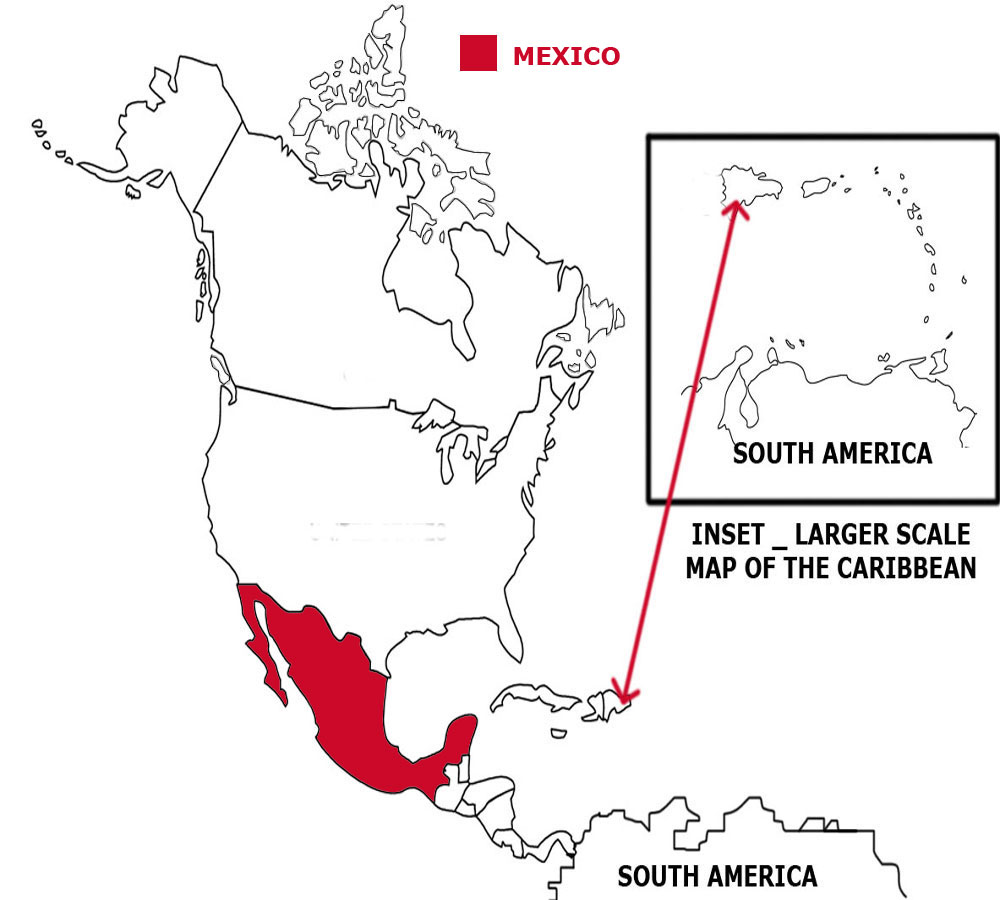

Check the weather in Mexico City now.
This is the time in Mexico City now. Mexico is spread across four different time zones.
 The Mexican flag is 3 equal vertical
stripes of green (flag pole side), white and red. The coat of arms of Mexico is in the centre of the white band. The coat of arms comes froma legend that the Aztec
people would settle at a location where they would see an eagle on a cactus eating a snake. The city they founded, then callled Tenochtitlan, is now where Mexico
City is.
The Mexican flag is 3 equal vertical
stripes of green (flag pole side), white and red. The coat of arms of Mexico is in the centre of the white band. The coat of arms comes froma legend that the Aztec
people would settle at a location where they would see an eagle on a cactus eating a snake. The city they founded, then callled Tenochtitlan, is now where Mexico
City is.
Mexico is a presidential republic with a president as head of state and head of government.
In elections everyone over the age of 18 must vote.
The currency in Mexico is the peso.
Spanish is the official language.
Hear the National Anthem
These are the anthem words
We have already written our own history of England but are asking schools in Mexico to provide us with a detailed history of
their own country. Check how here.
![]()
![]() Back to the top
Back to the top

The total land area of Mexico is 1,943,945 sq kms which is the 3rd largest in North America.
Mexico has lakes, rivers and canals which total 20,430 sq kms.
Mexico has boundaries with 3 countries
- The United States of America 3,155 kms
- Guatemala 958 kms
- Belize 276 kms
Mexico has a coastline of 9,330 kms which is the 3rd longest in North America.
The highest point in Mexico is Volcan Pico de Orizaba at 5,636 metres.
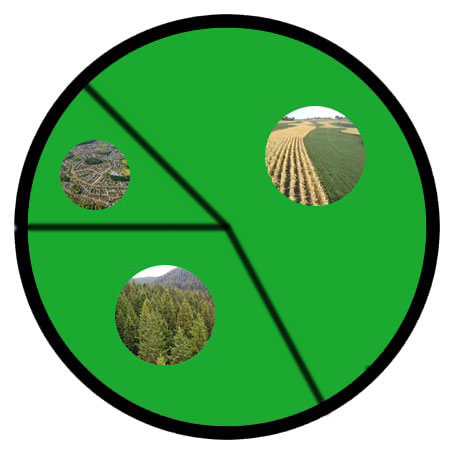

The total population of Mexico is 123.17 million people, making it the 2nd largest country in North America by population.
Of this number 62.76 million are females and 60.41 million are males.
A person from Mexico is called a Mexican.
To be a citizen of Mexico you must be born in Mexico or one of your parents must be a citizen of Mexico. You have to live in Mexico for
5 years before you can begin to apply for citizenship.
The largest five cities in Mexico, by population are:-
- Mexico City 12,294,193 people
- Iztapalapa 1,820,888
- Ecatepec de Morelos 1,806,266
- Guadalajara 1,640,589
- Puebla City 1,590,256
 Each little Owlbut is 1 person and
the big yellow rectangle is 1 sq km. After a while you can compare countries and see which ones are the most crowded. Remember it is only an average as
more people live closer together in towns and cities than in villages out in the country.
Each little Owlbut is 1 person and
the big yellow rectangle is 1 sq km. After a while you can compare countries and see which ones are the most crowded. Remember it is only an average as
more people live closer together in towns and cities than in villages out in the country.
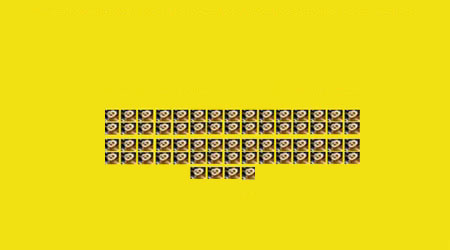
79.2% of the people live in cities or towns.

The birth rate in Mexico is 18.5 births per 1,000 of population
The death rate in Mexico is 5.3 deaths per 1,000 people.
Check this against the birth rate. If the death rate is higher than the birth rate then
the population will decrease unless immigrants arrive in the country.
There are 10.4 deaths of girls under 1 year per 1,000 of births and 13.3 deaths of boys.
The median age for females is 29.1 and for males is 26.9. The median age is that age which divides the population exactly in half so there are the same number
of people above the median age as below it.
The average age of a woman when she has her first child is 21.3.
The elderly dependency ratio is 9.8. This is the number of elderly people (ages 65+) per 100 people of working age (ages 15-64).
The potential support ratio is 10.2. This is the number of working-age people (ages 15-64) per one elderly person (ages 65+). As a population ages, the potential support ratio tends to fall, meaning there are fewer potential workers to support the elderly.
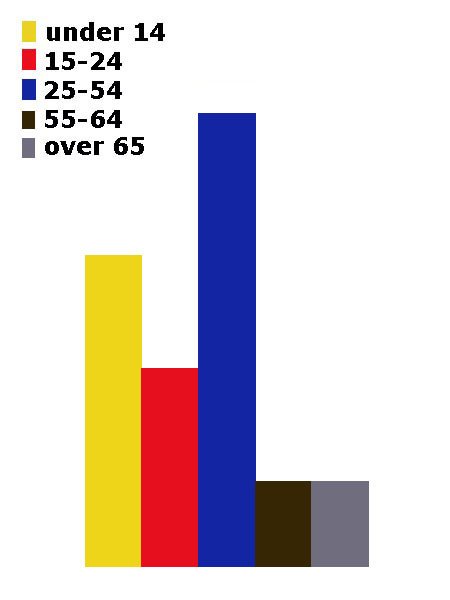
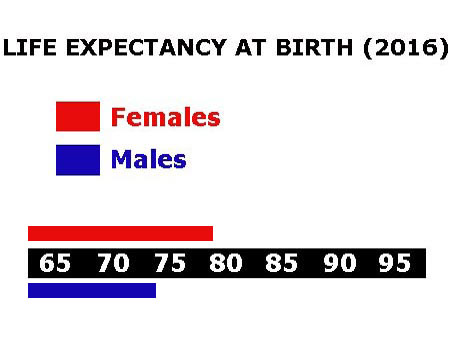

Mexico spends 6.3% of its total income on health care.
There are 2.10 doctors per 1,000 people.
There are 1.5 hospital beds per 1,000 people.
28.9% of the population are estimated as obese.
97.2% of the urban population and 92.1% of the rural population have drinking water that is either piped into their home or they have access to a public tap, a protected borehole, well, spring or
protected rainwater collection facility.
88% of the urban population and 74.5% of the rural population have access to a flushing toilet that is connected to a sewer. a pit latrine (that is a
permanent hole in the ground that is looked after) or a composting toilet.
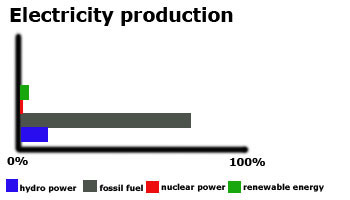
Mexico releases 455.0 million metric tons of carbon dioxide by burning fossil fuels in the process of producing and consuming energy. This puts it as the 3rd highest in North America.

Mexico spends 5.2% of its total income on education.
Children usually start school at age 6 in Mexico. Primary education is for six years until age 12 and secondary education must continue till 18. This may be followed
by further education at a university or college.
Generally the school year consists of 3 terms and starts in the third week of August and finishes in the third week of June. There is usually a 2 week
break at Christmas and Easter.
93.5% of females and 95.5% of males are able to read and write by the age of 15.
6.9% of all people aged between 16 and 24 are not in work. Among females 8.8% are unemployed while with males 6.3% can't find work.
The total number of people available for work in Mexico is 53.74 million.
 They work in the following sectors.
They work in the following sectors.
- Agriculture includes farming, fishing and forestry work
- Industry includes mining, manufacturing, construction and energy workers
- Services is everything else

There are 243 paved airports in Mexico, which is the 3rd highest number in North America.
![]()
There are 15,389 kilometres of railways in Mexico, the 3rd longest in North America.
![]()
There are 137,544 kilometres of roads in Mexico, which means Mexico is in 3rd place for the most kilometres of roads in North America.
![]()
There are 5 major national newspapers in Mexico.
There are 106.83 million mobile phone users.
16% of the people have a fixed landline.

69.92 million people have access to the internet at home via any device (computer or mobile).


